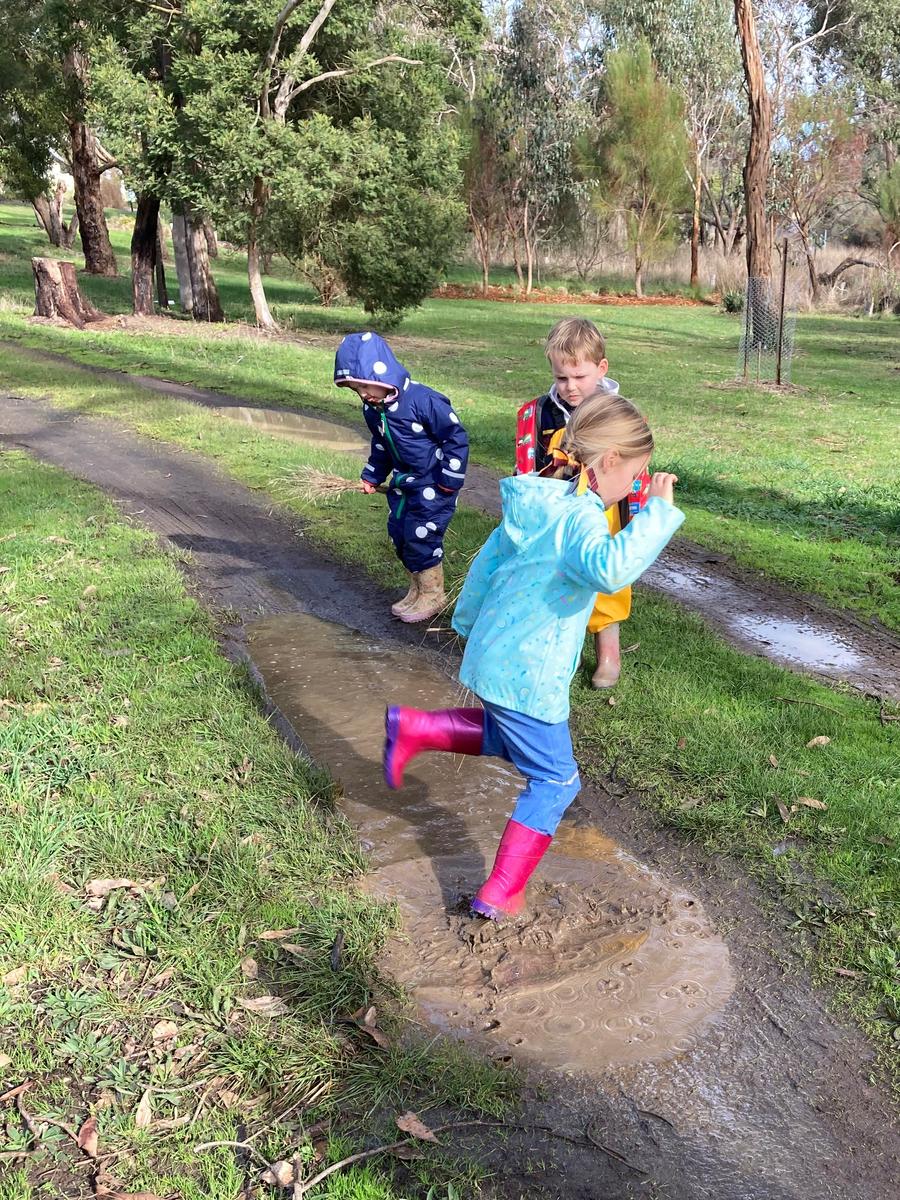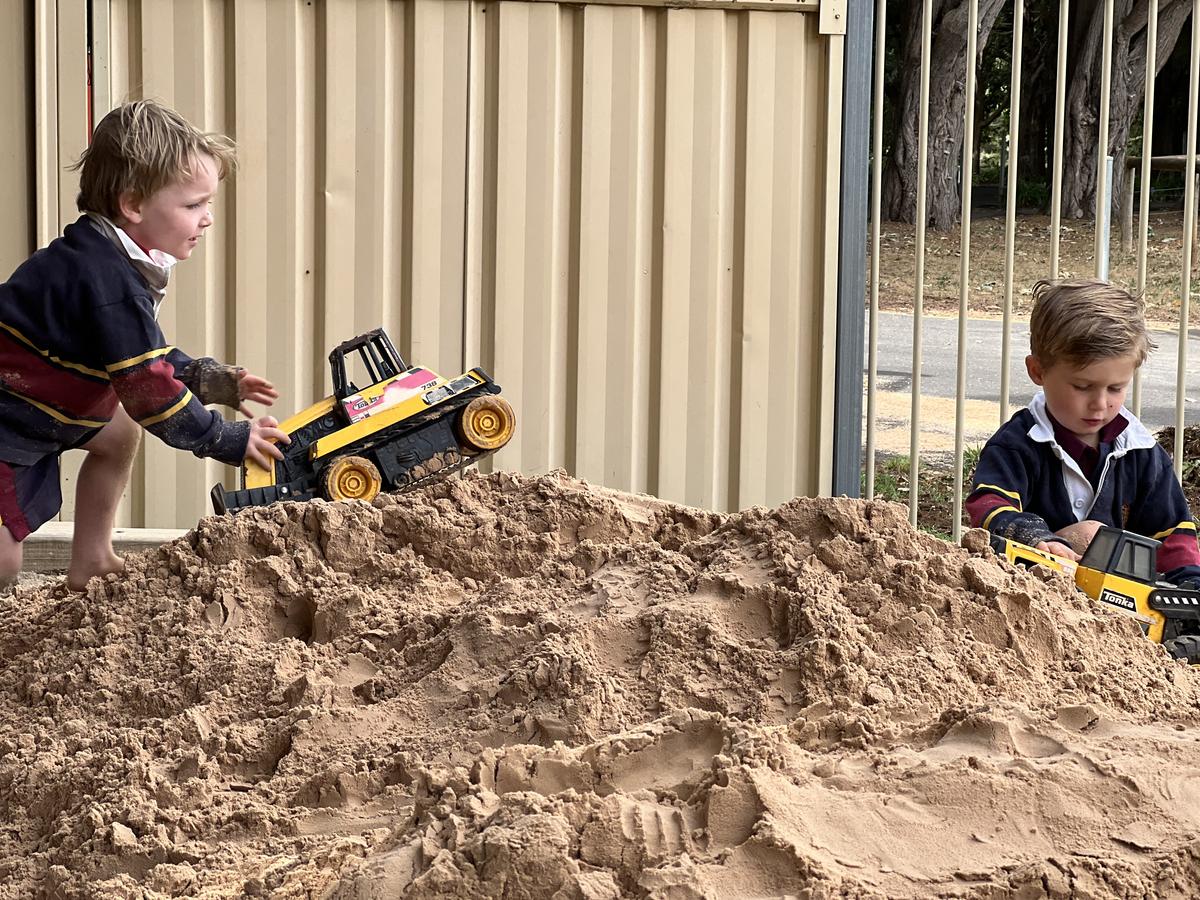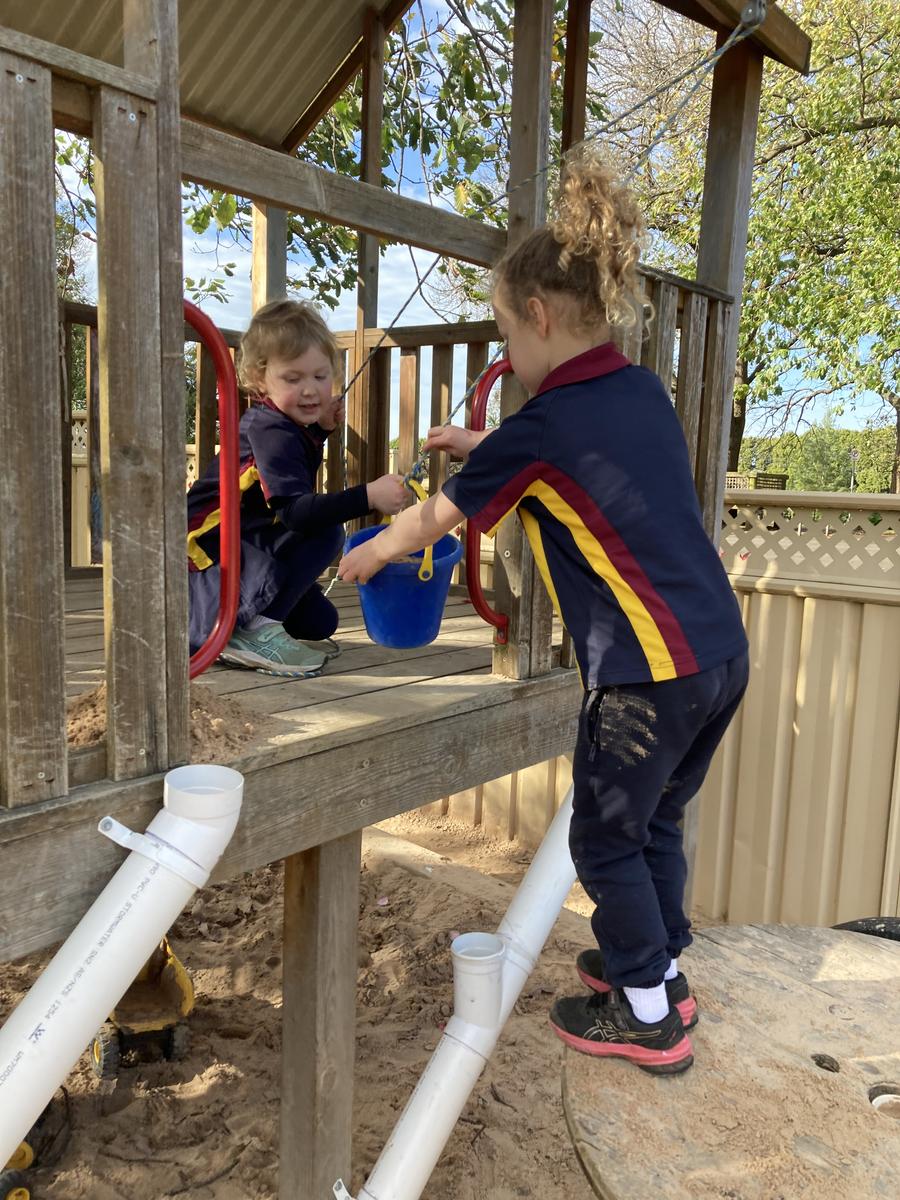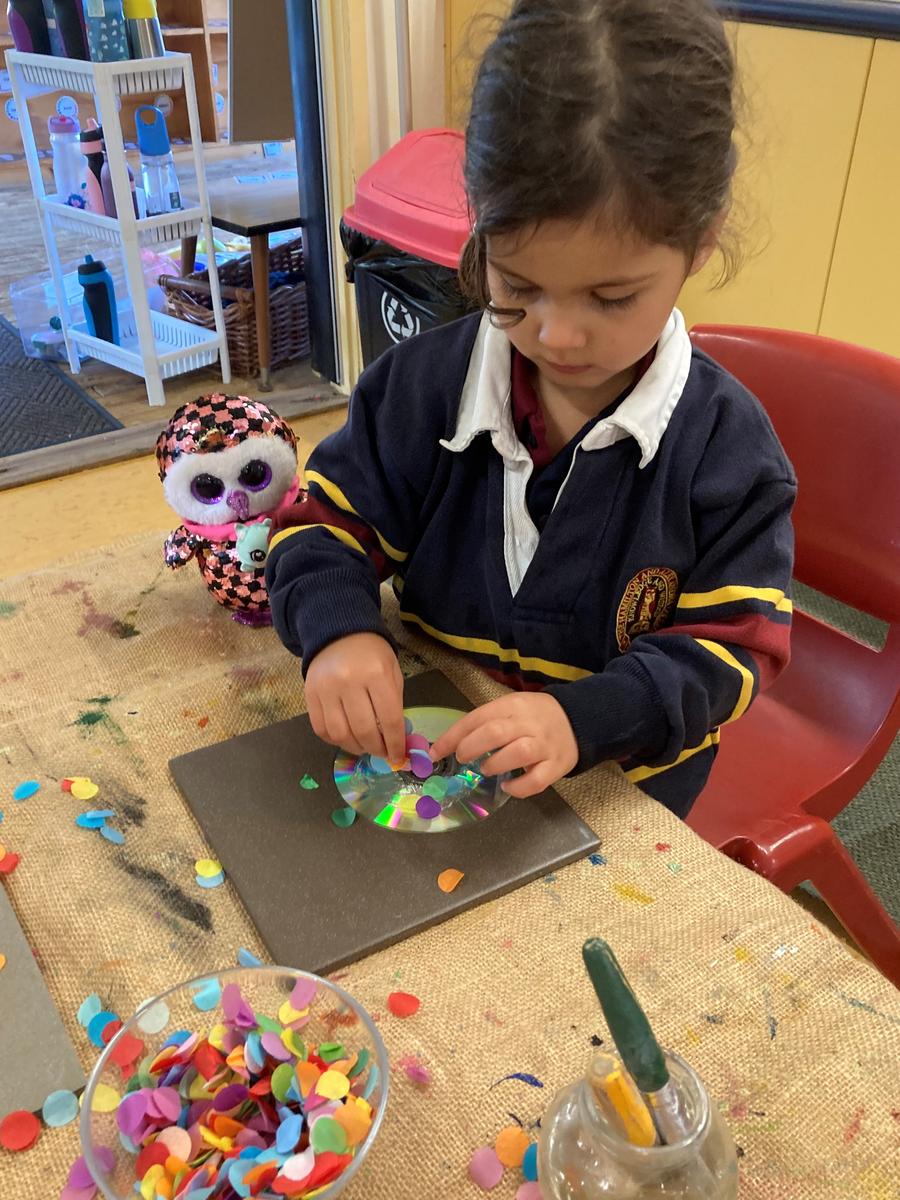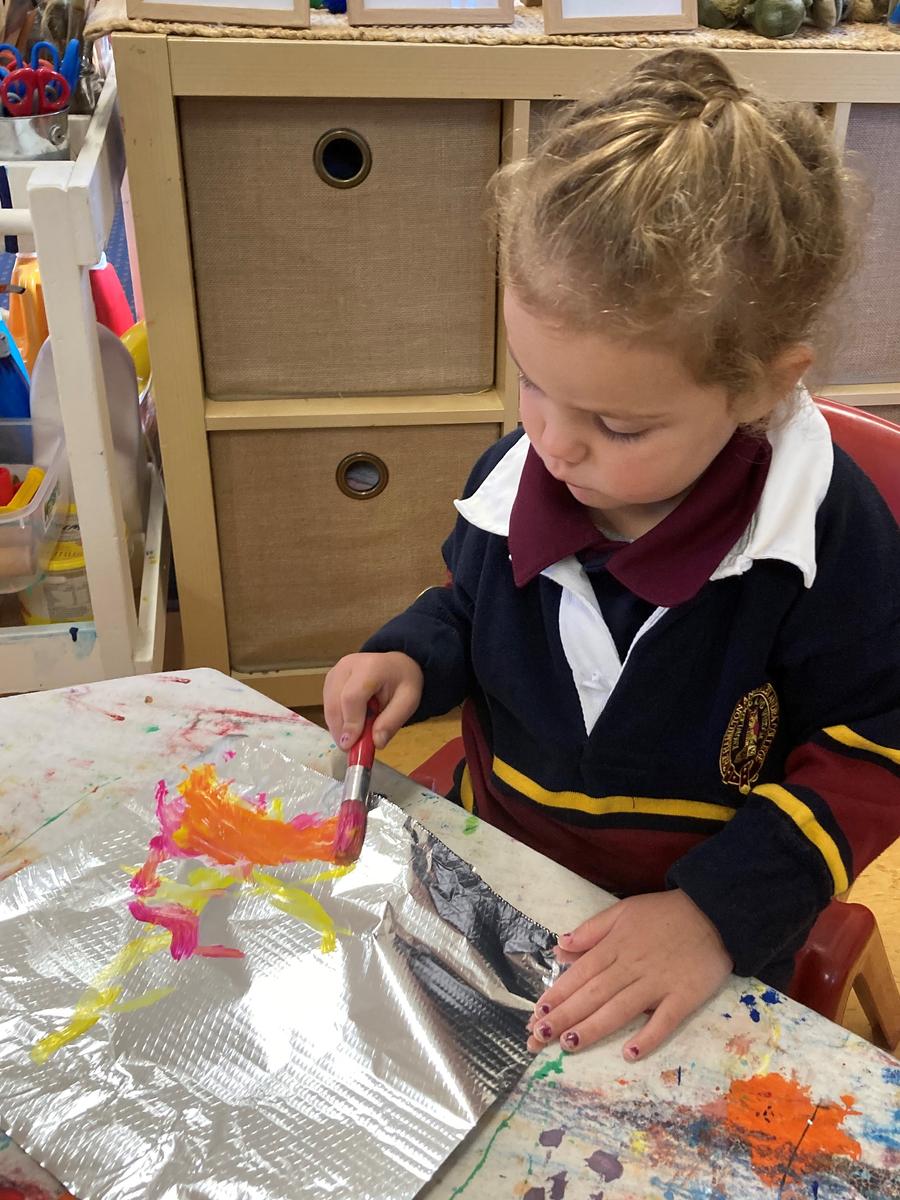Early Learning Centre
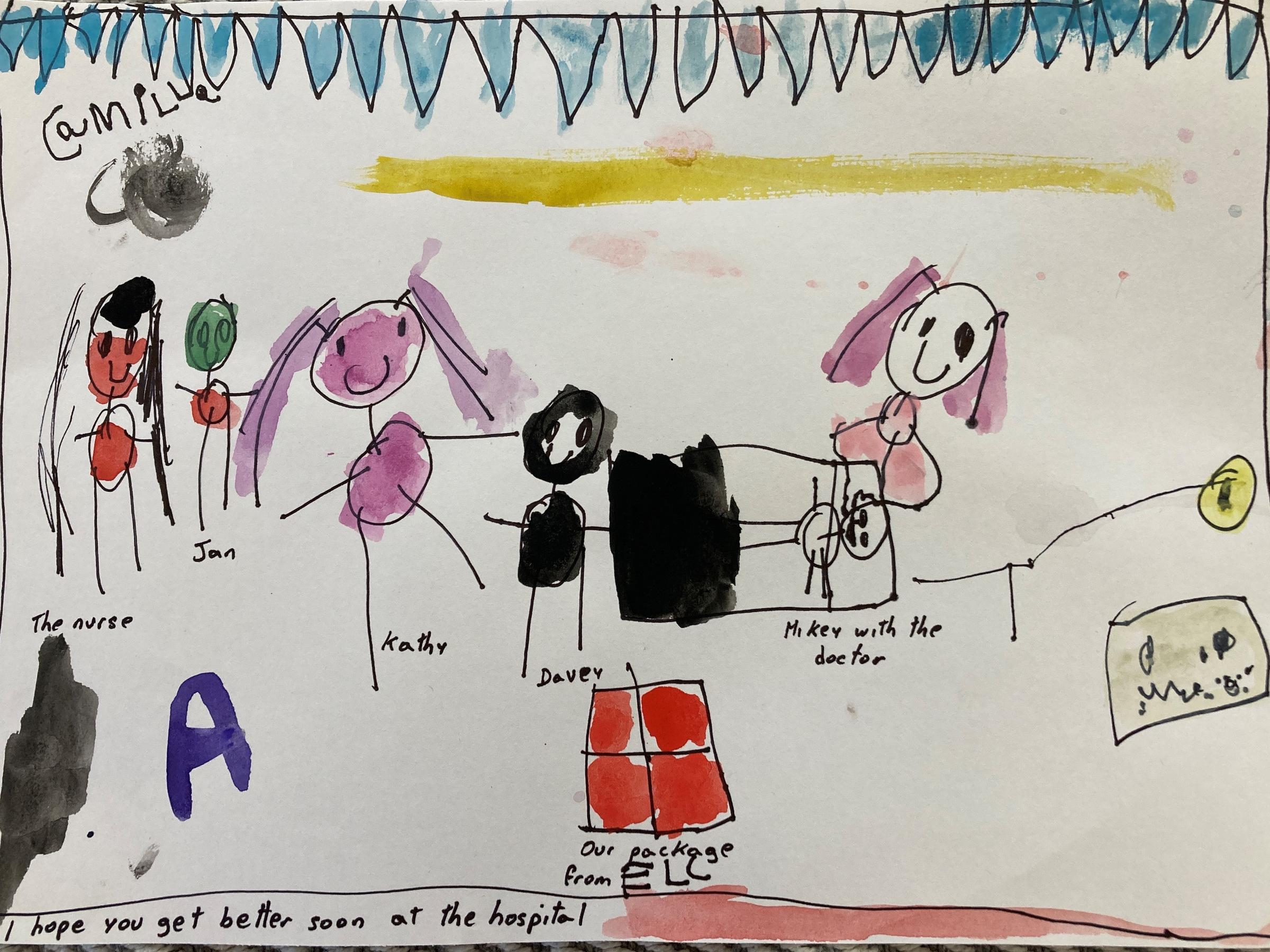
Messy Play
It is no secret that we believe that messy or sensory play is a vital component of our early learning curriculum. Children learn when they can experience their learning environment with as many senses as possible. All this sensory input helps them to make sense of their thinking and wondering. Messy play is also a joyful pursuit for many children and where there is joy there is learning.
There are many benefits to messy play and these include:
- Exploring materials, shapes, colours and textures.
- Expressing themselves creatively.
- A sensory experience to help children understand how things feel, smell and taste
Messy play is creative, allowing children to explore their imagination and express feelings.
- Messy play can involve sand, water, clay, mud, playdough, glue, paint and other materials.
- Using materials with different textures can help children get used to different sensations and using their hands and fingers.
- Some children may not enjoy the feel of sand or other sensations – be sensitive to this, encourage play, but don’t force it.
Play with sand
- Play with toys in the sandpit – figurines, cars, tea sets, buckets, containers, funnels.
- Use cups, sieves, cupcake tins, spoons, pots and bowls to create a pretend kitchen and let them make you a “coffee” or a “cake”
- Add water – your child can feel the difference between wet and dry sand and create rivers and lakes as part of the play.
- Visit the beach, or set up a sandpit – buy clean sand from hardware stores
- Sand and water play – build sand caves for toy animals or people using plastic containers, dig a swimming hole, or use cars and trucks to make roads.
Play with water
- Water play is a wonderful way to calm a tense or grumpy child, or to perk everyone up on a hot day. Join in with them and show them what else they could do.
- Bath or shower time – talk about different parts of the body; play with flannels, sponges, plastic cups, and sieves; sing splashy songs; blow soap bubbles.
- Everyday water play – let your child help wash up in the sink, wash vegies in a bowl, wash the car with a bucket, or wash some socks or toys in a tub.
- In the garden – run through the sprinkler, water the plants, digging and mud play.
- Painting with water – take a cup of water, some paint brushes and ‘paint’ the fence or path.
- Rainy day play – use an umbrella, splash through the puddles, look at the rain drops running down the window, sing rainy day songs.
- Make ‘boats’ for bath or paddle pool with corks, plastic lids, leaves. Talk about floating and sinking, heavy and light, full and empty.
When all the messy play is finished be sure to encourage your child to help with the clean-up. Messy play can seem overwhelming but if you make a space for messy play, the children will (for the most part) respect the boundaries.
For further information follow this link: https://cahs.health.wa.gov.au/-/media/HSPs/CAHS/Documents/Community-Health/ChildDevelopment/Play-and-Learning-9-messy-play.pdf
Have a great week.
Frances O'Brien
Director Early Learning Centre

